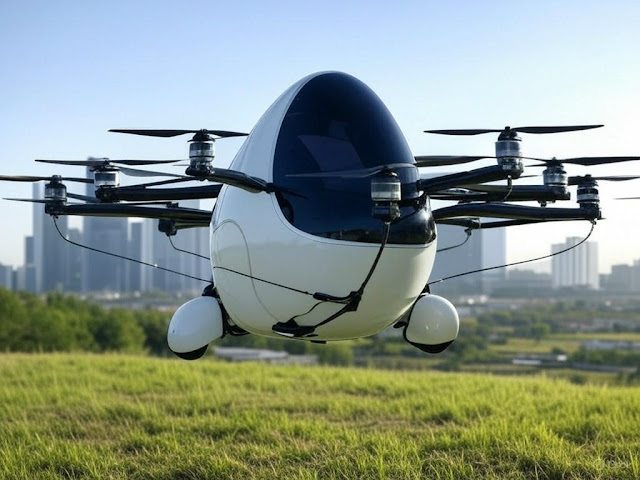China's Flying Taxis Take Off: A Revolution in Urban Air Mobility
China's Flying Taxis Take Off: A Revolution in Urban Air Mobility
In a groundbreaking move, China has officially entered the era of flying taxis, marking a significant leap in urban air mobility. The Civil Aviation Administration of China (CAAC) has granted air operator certificates to two pioneering companies, EHang Holdings and Hefei Hey Airlines, allowing them to operate autonomous passenger drones commercially. This development not only revolutionizes transportation but also positions China as a leader in the global race for electric vertical takeoff and landing (eVTOL) technology.
What Are Flying Taxis?
Flying taxis, also known as autonomous aerial vehicles (AAVs), are designed to transport passengers without the need for a human pilot. These vehicles use advanced technology to navigate through predefined flight paths, ensuring safety and efficiency. The most notable model, the EH216-S, is a fully electric, two-seater aircraft equipped with 16 propellers, capable of reaching speeds of up to 130 km/h and covering distances of up to 30 kilometers.
Key Players in China's Flying Taxi Industry
EHang Holdings
EHang Holdings, a Nasdaq-listed company, is at the forefront of this innovation. Their EH216-S model has received the world's first production certificate for an unmanned eVTOL, paving the way for large-scale commercialization of autonomous aerial mobility. EHang's vision is to provide safe, dependable, and eco-friendly air mobility services globally.
Hefei Hey Airlines
Hefei Hey Airlines, in partnership with EHang, has also secured the necessary certifications to operate autonomous passenger drones. Together, they are set to revolutionize urban transportation by offering services such as urban sightseeing tours and eventually, air taxi services.
Regulatory Milestones
The approval of air operator certificates by the CAAC marks the final regulatory hurdle for these companies. Prior to this, they had already secured type certificates, production certificates, and airworthiness certificates. This comprehensive regulatory framework ensures that these vehicles meet stringent safety standards, making them ready for commercial use.
Impact on Urban Mobility
Low-Altitude Tourism
Initially, these flying taxis will cater to the tourism sector, offering unique urban sightseeing experiences. Cities like Guangzhou and Hefei are expected to be among the first to benefit from these services, with plans to expand to other cities such as Shenzhen and Wuhan.
Future Expansion
As the industry evolves, air taxi services will become more prevalent, transforming the way people travel within cities. The convenience and speed offered by these vehicles will significantly reduce travel times, making them an attractive alternative to traditional modes of transportation.
Economic and Technological Implications
Economic Growth
China views the low-altitude economy as a key driver of economic growth, alongside emerging technologies like biomanufacturing, quantum computing, AI, and 6G networks1. The development of flying taxis is part of a broader strategy to innovate and lead in the transportation and mobility sectors.
Technological Advancements
The use of 5G connectivity and solid-state battery technology in these vehicles highlights China's commitment to technological innovation. These advancements not only enhance safety and efficiency but also position China ahead of other countries in the race for commercial eVTOL deployment.
Key Takeaways
1. Regulatory Approval: China has granted air operator certificates to EHang Holdings and Hefei Hey Airlines, allowing them to operate autonomous passenger drones commercially.
2. Technological Innovation: The EH216-S model is a fully electric, two-seater eVTOL with advanced features like 16 propellers and a top speed of 130 km/h.
3. Economic Impact: The low-altitude economy is seen as a significant driver of economic growth in China.
4. Future Expansion: Initial services will focus on tourism, with plans to expand into air taxi services across major cities.
5. Global Leadership: China is poised to lead the world in commercial eVTOL deployment, ahead of countries like the U.S.
Conclusion
China's foray into flying taxis marks a new era in urban air mobility, offering a glimpse into the future of transportation. With its robust regulatory framework and technological advancements, China is set to revolutionize how people travel within cities, positioning itself as a global leader in innovation and economic growth.









Post a Comment